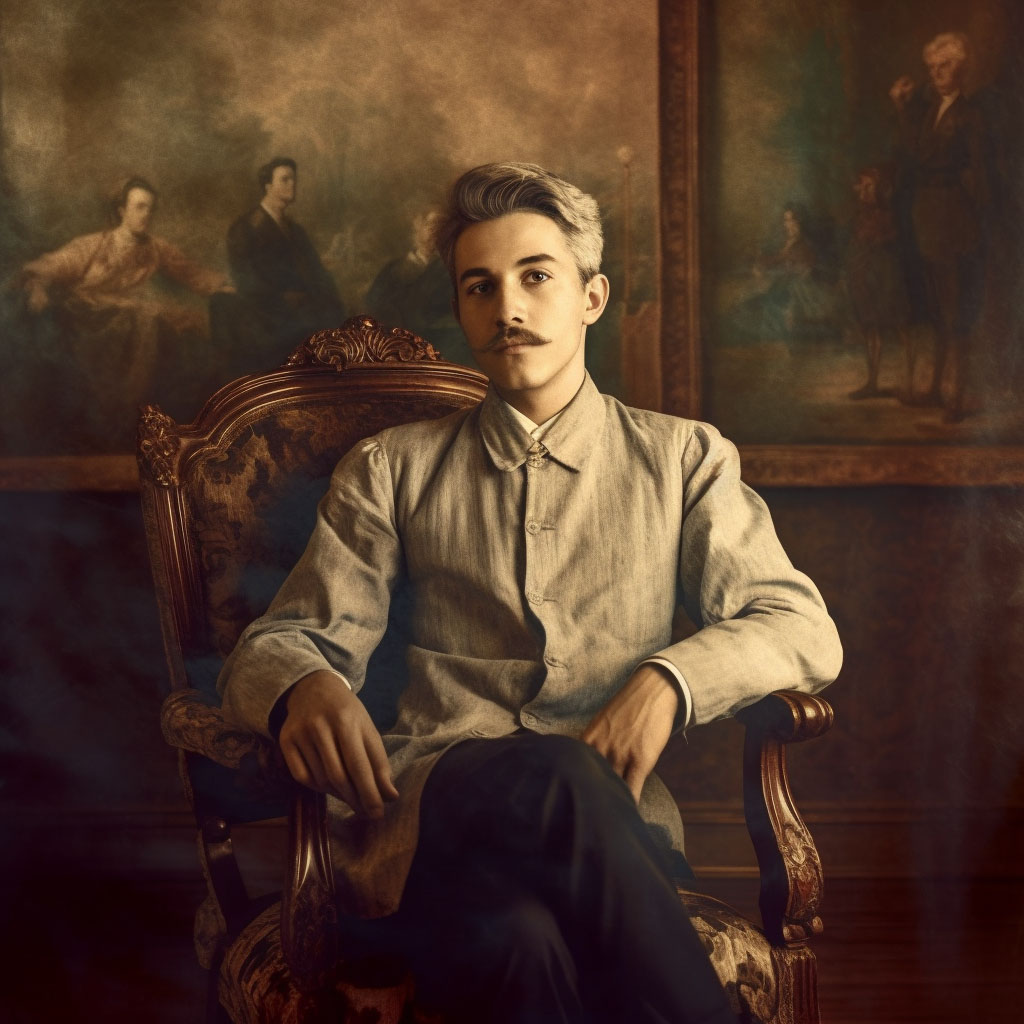
Alexandr Beggrov
/1841–1914/
Alexandr Beggrov was a distinguished marine painter celebrated for his mastery of seascapes during the late 19th and early 20th centuries. He remained dedicated to the academic traditions of this genre throughout his illustrious career. Beyond his artistic prowess, Beggrov was an academician and an honorary member of the Imperial Academy of Arts, as well as a notable figure within the Association of Traveling Art Exhibitions.
Beggrov came fr om a lineage steeped in artistry. His father, Karl Beggrov, an academician of the Imperial Academy of Arts, was a prominent watercolorist, lithographer, and esteemed figure in the art community. Despite showing early promise in drawing, young Beggrov was initially directed towards the Nikolaev Engineering and Artillery School of the Maritime Ministry, but destiny had a different course in mind.
In 1859, during a naval parade marking the unveiling of the monument to Emperor Nicholas I, Beggrov's encounter with the fleet left an indelible mark on his artistic sensibilities. The sketches he produced on this occasion garnered significant attention, leading to a pivotal decision to send him on a world tour to further hone his talents.
In 1874, he embarked on a new chapter, relocating to Paris, wh ere he honed his skills under the tutelage of the renowned French artist Leon Joseph Florentin Bonn. Beggrov's time in France also brought him into contact with notable Russian artists like Ilya Repin and Konstantin Savitsky. Throughout his career, Beggrov's works were consistently featured in exhibitions by the Association of Traveling Art Exhibitions, and he became a full member of the Partnership in 1876. His artistic prowess was internationally recognized, earning him accolades at world exhibitions in Vienna, Paris, and more.
Beggrov's final years were spent in Gatchina, where he built a home and cultivated a garden. Following the passing of his wife in 1903, he settled in Gatchina permanently. However, due to a severe illness, he had to cease painting activities in the last year and a half of his life. Despite this, his legacy endures, with a marble monument at his gravesite bearing witness to his lasting impact on Russian art.